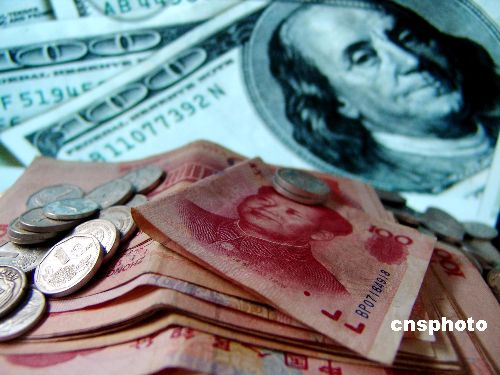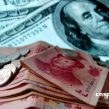
Is Renminbi becoming Asia’s Currency and Decoupling from the West?
Publication: China Brief Volume: 9 Issue: 21
By:

Since December 2008, China has signed $95 billion (650 billion RMB) in currency-swap agreements with Indonesia, Malaysia, South Korea, Hong Kong, Argentina and Belarus, in order to promote greater circulation and convertibility of the renminbi (RMB). Thailand is reportedly studying a possible currency swap agreement with China that would make it easier for their exporters to settle trade in the two currencies (China Post [Taiwan], September 2). According to experts, the increased regional use of the RMB for "invoicing, transaction and settlement purposes" could enhance its use as a "store of value" (China Brief, May 27).
The global financial crisis has prompted Beijing to hedge the weakening U.S. dollar by encouraging the regionalization of the RMB as a settlement currency for trade and other current account transactions in Asia, and bypassing the use of the U.S. dollar (China Brief, May 27). People’s Bank of China (PBC) Governor Zhou Xiaochuan’s article in March 2009, which called for an international reserve currency to take the place of the U.S. dollar, created a whirlwind of debate within China’s policy circles, and the international community, about the future role of the RMB. While the regional use of the RMB is spreading, analysts have emphasized that it is "usually at the expense of the U.S. dollar as transaction currency, not as reserve currency" (China Brief, May 27). According to Zhang Yuyan, the head of the Institute of Asia-Pacific Studies at Chinese Academy of Social Sciences (CASS)—one of China’s leading government think tanks—"A favorable balance of trade with China is a prerequisite for surrounding nations to use the RMB as a reserve currency" (Chinatoday.com.cn). Indeed, China replaced the United States as the main export market for Asian countries (Inter Press Service, January 23), and as the current pace of China’s investments exceeds the growth in its savings there is a possibility that the current account surplus may become a deficit by 2010 (Market Watch, September 22).
The use of the RMB in China’s neighboring countries for transactions has been growing in recent years (e.g. northern Thailand, northern Vietnam, Myanmar [Burma] and eastern Russia) since it is cheaper and simpler for smaller traders to use. In order to monitor these transactions, the Central Bank of China and Vietnam, and Laos, recently signed a bilateral settlement cooperation agreement, which according to Su Ning, the new vice president of the Bank of China, will enhance the fledgling financial regulatory mechanisms in the sub-region. Su made this statement on October 20 at the "China-ASEAN Financial Cooperation and Development Leaders Forum," which is a forum in conjunction with the Sixth China-ASEAN Expo that is taking place from October 20 to 24 in Nanning, Guangxi Zhuang Autonomous Region (United Daily News [Taiwan], September 21).
The bank’s vice-president pointed out that China-ASEAN financial cooperation has made considerable progress in recent years, and by the end of 2008, China and Thailand, Philippines, Malaysia and Indonesia and other countries had signed currency-swap agreements with a net worth over $230 billion. The Central Banks of every ASEAN country reportedly sent a representative to attend the forum. Su stated that the People’s Bank of China’s (PBC) next step will be to encourage ASEAN countries’ financial institutions to establish branches of operations in China, or invest in Chinese financial institutions, and therefore expand the scale of a fund for greater Asian bonds, and promote the development of an Asian bond market (United Daily News, September 21).
Xia Bin, president of the Financial Research Institute of the Development Research Center of the State Council—the Chinese government’s executive branch—stated that, "China is not pursuing the optimum target of complete internationalization of the RMB, but a suboptimal one: gradual regionalization of the currency" (Chinatoday.com.cn). The push for the regionalization of RMB appears to be gathering steam ahead of the scheduled launch of the China-ASEAN Free Trade Area (CAFTA) on January 1, 2010. Under the terms of CAFTA, there will be zero-tariff for 90 percent of the products traded between China and ASEAN countries and "substantial opening" in the service trade market (China Daily, October 21). According to some estimates, the total trade between China and ASEAN members could reach $4.5 trillion once the FTA is launched (China Stakes, August 17). The launch of CAFTA will provide momentum for broader regional growth and may facilitate a decoupling from the West, as the RMB plays a more prominent role in the regional economy (China Stakes, August 17; China Brief, August 20).
Prior to the financial crisis, the Chinese government did not appear to have a policy on the convertibility of the RMB (China Brief, May 27). Yet the raft of RMB-denominated lines of credit extended to neighboring countries and bilateral local currency swaps that have been signed in recent months demonstrate a far-sighted Chinese stake in increasing the convertibility of the RMB. Moreover, CAFTA would serve as a platform to accelerate the regionalization of the RMB.





